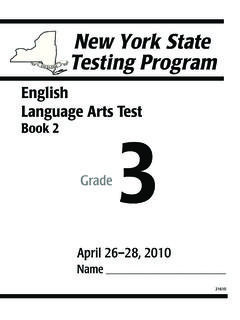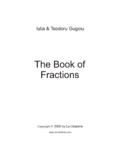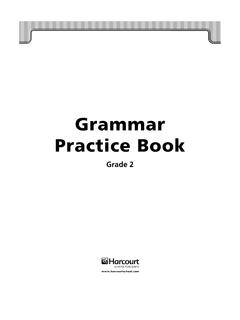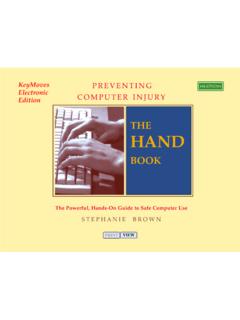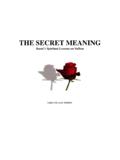Transcription of To all the Chess Warriors out there! - Book …
1 Chess Tactics: Weapons for the Chess WarriorAlpha One BooksCopyright 2013 Jeremy FreemanAll rights reserved. No part of this publication may be reproduced, distributed, or transmitted in any form or by any means, including photocopying, recording, or other electronic or mechanical methods, without the prior written permission of the author, except in the case of brief quotations embodied in critical reviews and certain other noncommercial uses permitted by copyright : Lynne Melcombe ( )Cover designer: Raymond Minaar ( )Interior designer: David Moratto ( )LCCN: 2013950646 ISBN: 978-0-9894577-0-5 First editionAlpha One BooksTo all the Chess Warriors out there! VIIThe Opening: It s Your Move! ..1 CHAPTER 1 The Basics: Train for Battle ..5 CHAPTER 2 Forks: Attack More than One Target .. 13 CHAPTER 3 Discovered Attacks: Ambush the Enemy .. 33 CHAPTER 4 Pins: Immobilize the Defender.
2 53 CHAPTER 5 Skewers: Catch the Exposed Piece .. 73 CHAPTER 6 Removing the Guard: Expose the Target .. 93 CHAPTER 7 Trapped Pieces: Leave No Escape Route .. 113 CHAPTER 8 Basic Checkmates: Force Enemy Surrender .. 135 CHAPTER 9 Training Puzzles: Slick Drills, Quick Kills .. 167 Answer Key .. 211 IXThis book would not have been possible without the kind support and help of many individuals. I would like to extend my sincere thanks to all of them. I am thankful to Lynne Melcombe for skillful editing and meticulous proofreading; indebted to David Moratto for his guidance and providing a superior layout design; and grateful to Raymond Minaar for all his help in creating an amazing cover. And I would like to offer my special thanks to my beloved family for their understanding and endless love through the long duration of writing this book . This is not a work of scholarship.
3 I am no Hebraist, no higher critic, no ancient historian, no archeologist. I write for the unlearned about things in which I am unlearned myself. If an excuse is needed, and perhaps it is for writing such a book , my excuse would be something like this. It often happens that two schoolboys can solve difficulties in their work for one another better than the Master can. The fellow pupil can help more than the Master can because he knows less. The difficulty we want him to explain is one he has recently met. The expert met it so long ago that he has forgotten. In this book then, I write as one amateur to another. With the hope this might, at any rate, generate interest, and sometimes even help other inexpert readers. Lewis, Reflections on the Psalms1Do you want to be a better Chess player? No problem!Do you want to win more games? No problem!Do you want to have more fun playing Chess ?
4 No problem!hatever YOU want, this book will help you. All you need to do now is take action! How do you take action? By reading this book , of course! Chess Tactics: Weapons for the Chess Warrior will help you learn Chess tactics. Tactics are like weapons. You can use Chess tactics as weapons to gain the advantage and win more battles!The book starts by describing some weapons. It tells you what different weapons are called and how they work. It shows you how to make them into a plan to win the rest of the book is filled with fun puzzles that will help you practice and learn all of the main tactics. These tactics are used by even the best h e s s Ta c t i c s will help you if you are: A beginner, and you want to get better fast. A parent, who is looking for a user-friendly guide to help your child learn. An instructor, and you need a valuable tool for your Chess h e s s Ta c t i c s is filled with: Step-by-step instructions on using tactics to win Chess games.
5 How to do Chess notation (write down Chess moves). Hundreds of fun puzzles to sharpen your h e s s Ta c t i c s promises: You will learn to use Chess tactics well. You will find Chess more and more fun. You will win more and more Are Chess Tactics?earning basic Chess tactics is important for any beginner Chess tactics are moves you use to take advantage of your opponents mistakes and capture of a Chess game as a battle. Your opponent is your enemy. And Chess tactics are your use these weapons to attack your enemy and win the this book , you learn to become skillful at using Chess tactics to capture enemy pieces and win more most common Chess tactics are called: Forks Discovered Attacks Pins Skewers Removing the Guard Tr a p sIn the next section of the book , you will learn how each tactic works and when to use them. But first, you will learn some basic concepts to make Chess tactics Are Chess Tactics Important?
6 Think about a Chess game as a battle in the days of King Arthur or Robin Hood. That was a time when kings and queens lived in castles. Warriors wore armour and rode into battle on those days, the art of war was simple. Kings and Warriors used tactics to conquer their enemies. They wanted to win battles, take over lands, and gather art of Chess is the same. You want to be a Chess warrior. To do this, you need an arsenal. An arsenal is a set of weapons, like swords and use the weapons in your arsenal to perform tactics. Your tactics are part of your strategy. A strategy is a plan. With good tactics and strategy, you can learn to use these weapons like a Chess warrior. You can become a feared opponent, have more fun, and win more games!The Basics of Your ArsenalWhat do you need to make a Chess tactic successful? Forcing Moves Dual Threats Loose PiecesForcing MovesA forcing move is the most important idea behind all Chess tactics.
7 With a forcing move, you can force your enemy to move a piece to a place where you can capture you use a forcing move, your opponent s reply might put you in a position to capture a you become a Chess warrior, you will be able use forcing moves to an-ticipate how the board will look after your opponent s next two replies, or l Thr e atsDual threats are moves that create two threats to your enemy at the same time. This is a big problem for your enemy. He has only one move to reply to both is very good for you. First, he will move one piece to protect it from your attack. This will leave the other piece from your dual threat , you can attack the other piece that was part of your dual threat. You can capture that piece on your next PiecesA Chess piece is called a loose piece when no other piece is protecting players think all of their pieces look safe. But danger may be lurking.
8 As a Chess warrior, you should think of all loose pieces as targets for a tactical you see that your enemy has a loose piece on the board, try to plan a sur-prise attack. Use a forcing move or a dual threat to capture her loose of the PiecesChess is all about advantages. An advantage is anything that helps you capture your enemy s pieces and win the do you know if a tactic gives you an advantage? It helps to know the value or power of each piece. Pawn = 1 Knight = 3 Bishop = 3 Rook = 5 Queen = 9 Chess Notation Made EasyChess notation is a way of reading and writing about Chess moves. Writing the white rook in the second square from the side and the third square from the end takes too long!It is better to use Chess notation. Chess notation uses many abbreviations (short forms) so you can read and write about Chess are a few different kinds of Chess notation. In this book , you will learn the algebraic system.
9 Do not let the name scare you. Once you learn the system, you will find it the SquaresThe first thing you need to learn is the names of the eight rows across the board are called the rank. They are lettered a to h. The eight rows up and down the board are called the file. They are numbered 1 to b8 c8 d8 e8 f8 g8 h87a7 b7 c7 d7 e7 f7 g7 h76a6 b6 c6 d6 e6 f6 g6 h65a5 b5 c5 d5 e5 f5 g5 h54a4 b4 c4 d4 e4 f4 g4 h43a3 b3 c3 d3 e3 f3 g3 h32a2 b2 c2 d2 e2 f2 g2 h21a1 b1 c1 d1 e1 f1 g1 h1a b c d e f g hName the PiecesNow you are ready to learn the abbreviations for the names of each piece. King = K Queen = Q Rook = R Bishop = B Knight = N Pawns = no abbreviationYou identify pawns by their destination square. That just means the name of the square a pawn is moving the SymbolsThese symbols tell you what each piece is doing when it moves from one square to another.
10 Capture = x Check = + Checkmate = #Understand the MovesNow you are ready to put the piece names and the square names together to describe each move. Below is a sequence of three move:The white bishop moves to the f4 square, putting the black king in check. ( B f 4 +)Second move:The black king f lees to the e6 square. (Ke6)Third move:The white bishop moves to capture a piece on the b8 square. (Bxb8)The Chess notation would look like this: + Ke6 in Chess is when you use one piece to attack two enemy pieces at the same time. The dual threat is the heart of this fork is effective because on your opponent s next move, he can only save one piece. Now you can capture his unprotected forking pattern includes three points on the board: the forking square and the two pieces you are targeting. Any piece can carry out a fork, but the knight and the queen are the tactic to work, both targets should be unprotected.

